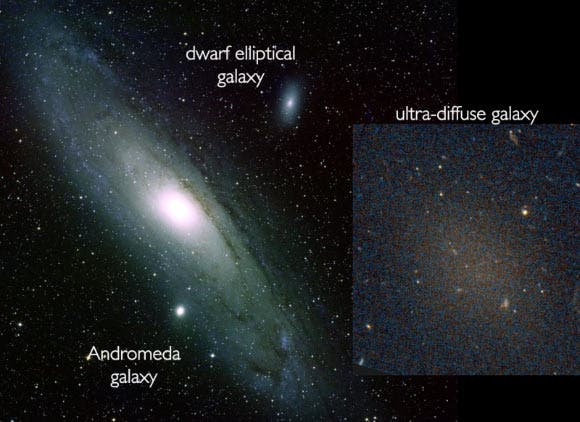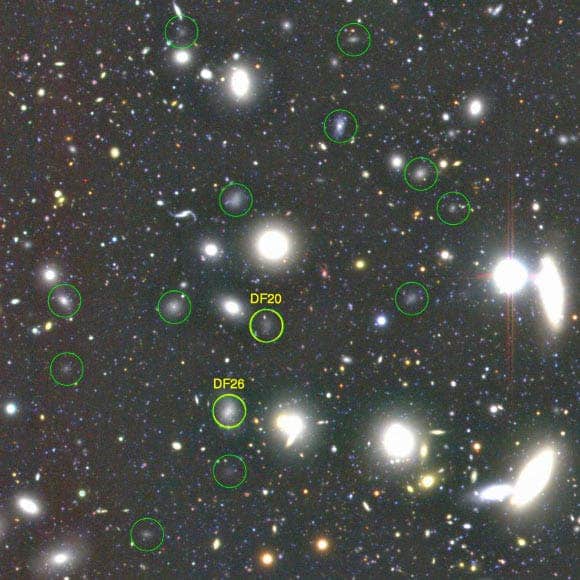Astronomers have discovered a whopping 854 new ultra-dark galaxies which might have large quantities of the elusive dark matter, which makes out most of our universe.

The ultra-diffuse galaxy Dragonfly 17 is shown next to other types of galaxies, to scale. The giant spiral Andromeda Galaxy and the dwarf elliptical galaxy NGC 205 are also shown. Image credit: B. Schoening / V. Harvey / REU program / NOAO / AURA / NSF / Pieter van Dokkum / Hubble Space Telescope.
Dark matter is a mysterious as it sounds – it’s a hypothetical type of matter that can’t be seen directly, but astronomers believe accounts for most of the matter in our Universe. Why would we believe something which we can’t see fills the Universe? Because we see its effects. The existence and properties of dark matter are inferred from its gravitational effects on visible matter, radiation, and the large-scale structure of the universe. Needless to say, its extremely exotic and surprising nature is one of the greatest mysteries in modern science – uncovering it would mean uncovering some of the Universe’s best kept secrets, so scientists are welcoming any clue regarding the nature of dark matter.
Now, Dr Jin Koda of the Stony Brook University and his team has discovered 854 ultra-diffuse galaxies (UDGs) in a sector called the Coma cluster. They used images obtained with the Subaru telescope, an 8.2-meter optical-infrared telescope at the summit of Mauna Kea, Hawaii, operated by the National Astronomical Observatory of Japan.
“We believe that something invisible must be protecting the fragile star systems of these galaxies, something with a high mass. This, of course, is the key to what they believe in their theory. The stellar population within such fluffy extended galaxies is subject to rapid disruption due to a strong tidal force detected within the cluster but dark matter must be protecting the fragile star systems of these galaxies,” he said.

This composite image shows ultra-diffuse galaxies in the Coma cluster: yellow circles show two of the 47 Dragonfly galaxies, and green circles are the ones discovered by the Subaru telescope. Image credit: NAOJ.
These galaxies are about 300 light years away, and many of them (332) are comparable in size to the Milky Way. They also seem arranged in a cluster with most of them concentrated at the center.
“They are a passively evolving population, lying along the red sequence in the color-magnitude diagram with no signature of H-alpha emission. Star formation was, therefore, quenched in the past,” the astronomers said.
Hopefully, discoveries like this one will finally enable us to understand what dark matter really is, and how it helps shape our Universe.
Journal Reference: Jin Koda et al. 2015. Approximately a Thousand Ultra Diffuse Galaxies in the Coma cluster. ApJL, accepted for publication, arXiv: 1506.01712









